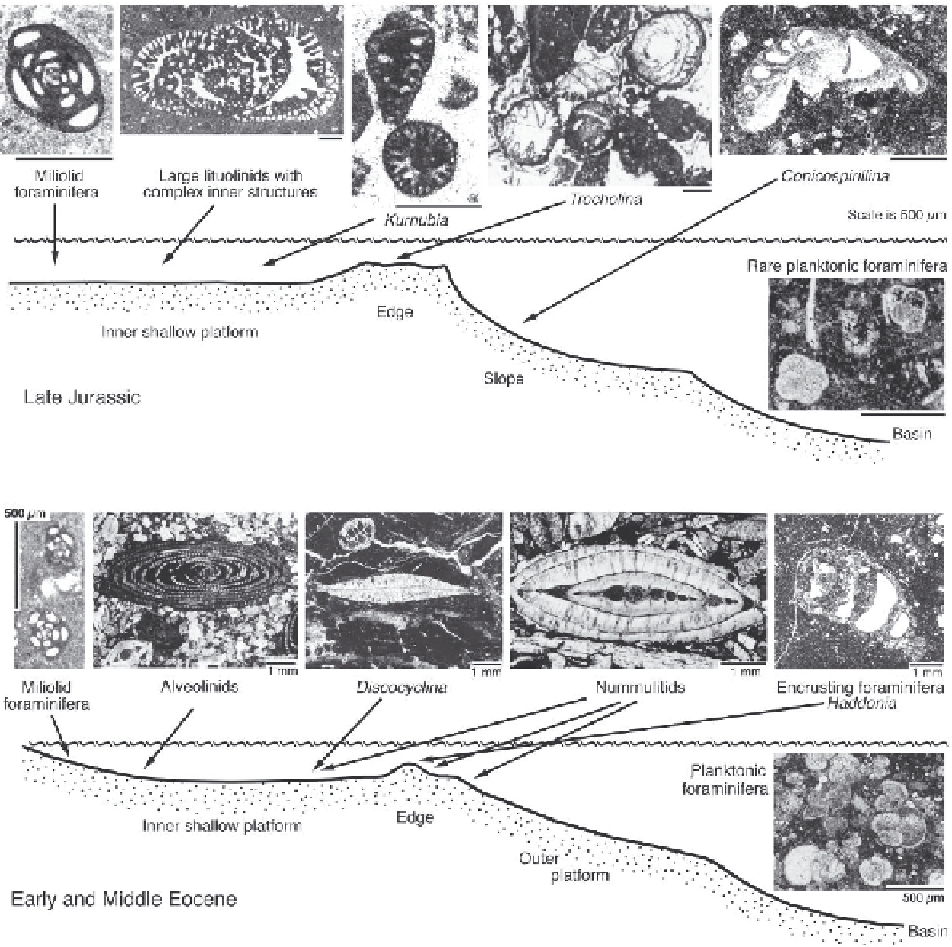Geology Reference
In-Depth Information
A
B
Fig. 10.28.
Generalized patterns of the distribution of common foraminifera
in different sedimentary environments.
A: Late Jurassic.
Protected muddy inner platform sediments yield many miliolid foraminifera. Agglutinated larger foramin-
ifera, particularly lituolids with complex inner structures (e.g.
Alveosepta, Pseudocyclammina
) and
Kurnubia
were common
in energetically different parts of the inner platform. Trocholinid foraminifera were abundant near or within platform-margin
buildups (e.g. reefs formed by corals, ellipsactiniids and many encrusters). Upper slope environments are characterized by
hyaline foraminifera, such as
Conicospirillina
or
Protopeneroplis
. Planktonic foraminifera appear in the late Middle Jurassic
(this picture) and may be found also in Late Jurassic pelagic deep-water limestones, which are otherwise typified by radiolar-
ians and other planktonic microfossils (pelagic crinoids and bivalves).
B: Early and Middle Eocene.
Shallow inner platform areas were inhibited by low-diversity small miliolinids as well as
large alveolinids and discocyclinids. Thick-shelled nummulitids lived in shallow waters both in inner and outer platform or
ramp settings. Reefs formed by corals and corallinacean red algae contain agglutinated encrusting foraminifera. Aggluti-
nated foraminifera are also common in deeper platform environments and may occur together with planktonic foraminifera.
Planktonic globigerinids and globorotaliids contributed to the formation of basinal carbonates.

